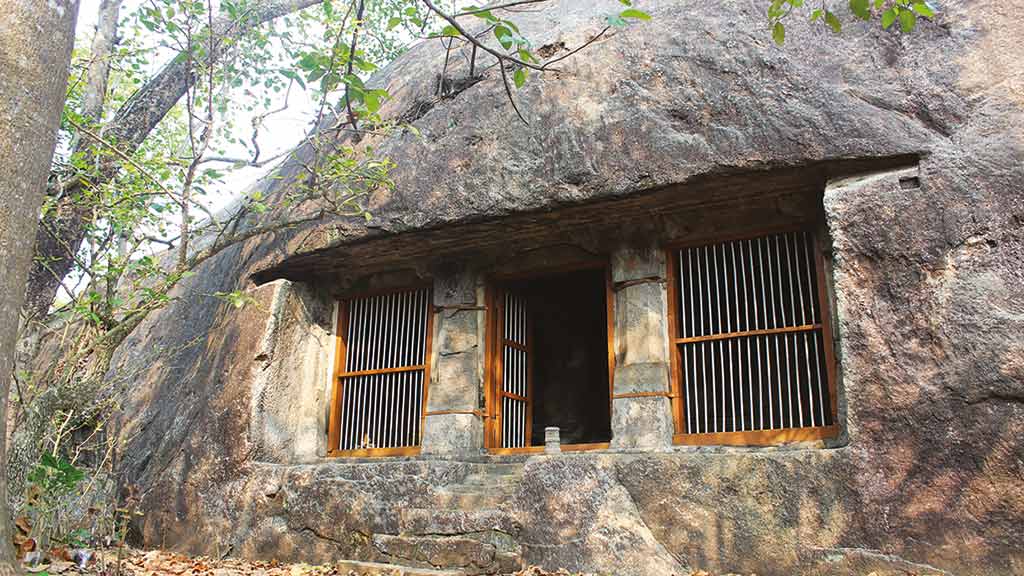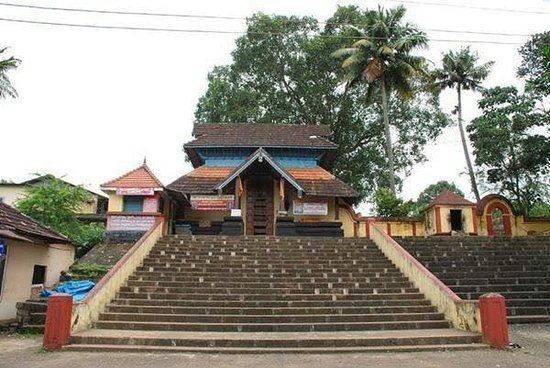
Goverment of Kerala
Revenue Department
Kaviyoor
Village Office
Official Web Portal

Goverment of Kerala
Official Web Portal

Thrikkakkudy cave temple dedicated to Lord Siva is one of the oldest cave temples of Kerala. The entire construction resembles the Pallava art tradition and it is believed to have belonged to the latter half of the 8th century. This cave temple facing the west comprises of a central shrine with a Sivalinga, an Ardhamandapa and a pillared facade. The cave is 19 feet 8 inches wide and 8 feet 6 inches high. Two pillars of 8 feet 8 inches in height gave out three cave openings of which two caves are of 5 feet in width and the other is that of 4 feet 8 inches. A cylindrical rock cut Siva linga is enshrined in the central shrine. The rectangular hall in front of the sanctum measures 19 feet 8 inches by 5 feet. Inside the square-shaped garbhagriha Sivalinga is mounted on rectangular Peeda. On the north and south walls of the Ardhamandapa there engraved figures like Chathurbhuja Ganapathy and a born sage respectively. Among the two Dwarapalaka figures one is of a local chieftain and the other carrying a 'gada.' It was declared as protected monument in 1965.

An ancient temple of immense historical value, Thrikkaviyoor Mahadeva Temple or Kaviyoor Mahadeva Temple is preserved as a monument by the Archaeological Department. On the banks of the river Manimala is the Kaviyoor region, famous for its temples, where this iconic shrine is situated. Historians date this temple to a period as early as the eighth century AD due to its resemblance to the Pallava style of architecture. The engravings here feature among the earliest specimens of stone sculptures in Kerala. The main deity of the temple is Lord Shiva, represented in the 'Shivalinga' which is about three feet high and carved out of rock, enshrined in a square cave. Idols of Ganapathy, Maharshi and Dwarapalakas can also be found in the temple premises.
Njaliyil Bhagavathy Temple is dedicated to Bhagawathy who is actually Bhadrakali, at Njalikandam province of Kaviyoor, about a km east of the main Shiva temple. An old temple formerly owned by Naithallur Illam (immigrants from Kodungalloor; see 'History'), it is now managed by the public. The goddess was originally enshrined in the illam, but was shifted to the present site later. The locals believe that once upon a time the head of the illam used to go on an annual pilgrimage to Kodungallor and when he became too old to travel the goddess offered to settle in his illam. The shrine was shifted as the goddess apparently became more powerful to be housed in a family shrine. In the month of Makaram (January)'Ashwathy' festival is conducted. The festival's name comes from "Aswathy", the first of the 27 birth stars in Malayalam astrology. Eye-catching Thaalapoli (താലപ്പൊലി), a procession of young women carrying lamps/wicks and grain in well-adorned trays for appeasing the deity is an important annual function. And Noottiyonnu Kalam, offering of 101 earthen pots filled with grains etc. (നൂറ്റൊന്നു കലം, like Pongala) and Annadaanam (free mass feast) are the other events (offerings) during festival time. Padayani – this is a combination of music, dance, painting, satire etc. reflecting the ancient socialist society before Aryanization and advent of four caste system – is the colourful annual event extolling Bhadrakali for the murder of Daarika, a demon.